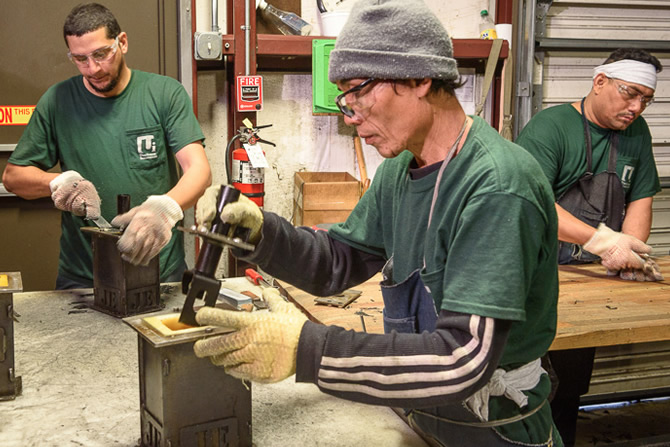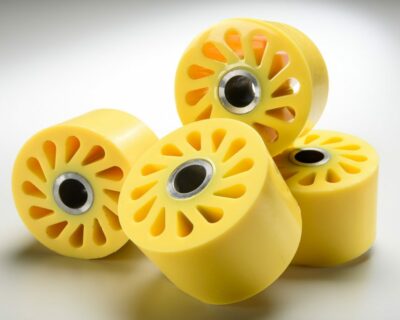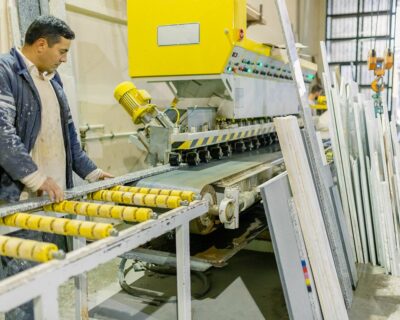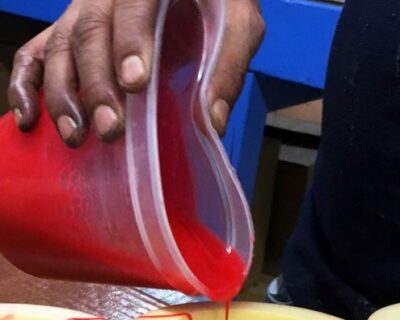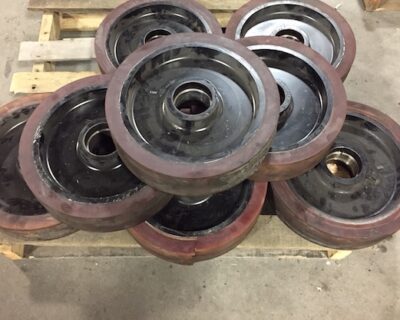GM wanted a supplier who could reduce manufacturing costs while also meeting an aggressive production schedule. Today, UI is a Tier 1 Supplier with a 99.95% on-time delivery rate.
The Challenge
A Tier 1 supplier to GM since 2000, Urethane Innovators manufactures custom urethane dunnage that protects vehicle drivetrain components from vibration and impact damage during transportation.
When GM first approached Urethane Innovators, the vehicle manufacturer had been experiencing high production and high component damage costs. The damage costs were due to the urethane dunnage parts not being able to securely hold the components in place.
GM wanted a supplier who could reduce the manufacturing costs of its urethane dunnage, significantly reduce component damage, and meet its very aggressive production schedule of as many as 16,000 parts a week.
After initial meetings and discussions, Urethane Innovators took on the challenge.
The Solution
GM had hundreds of different drivetrains, with each one requiring 1 – 6 pieces of dunnage to securely hold components in place during their journey to final assembly.
The urethane dunnage parts would be cast in metal box molds, which were designed by GM and then manufactured by another company – making the molds’ design many steps away from the actual production process.
When UI first received the molds, the production team was quite surprised at how heavy they were. They were difficult to assemble and disassemble, and each one weighed 50 pounds or more. Both factors slowed production time considerably, so the team knew they had to do something, fast, or they’d miss shipping deadlines, too.
Reconfiguring the molds
The shape of the metal mold box served a purpose in that it provided positive shrinkage – meaning, it stabilized the dimensions of the dunnage part once the urethane cured.
However, the heavy weight meant each box was difficult to lift, move or carry. The mold’s weight slowed down production and exhausted the line workers, who were absolutely worn out by the end of their shifts.
UI worked closely with GM engineers to redesign the mold box. Initial changes reduced the weight from 50 pounds to 20 pounds – a 60% reduction.
Reducing the mold box weight was a crucial first step. Because production was producing thousands of parts a week, UI needed to reduce worker fatigue and the potential for someone getting hurt, as well as speed up the production process.
Improving the whole part
Transportation of parts by truck, rail or even air involves a great deal of stress in the form of vibration, bumps, and impact – all of which can lead to damage of heavy components if they’re not properly secured. (It’s similar to when the pilot asks passengers to remain seated with seatbelts buckled during flight turbulence.)
During transportation, the dunnage pieces are located on a small rack and bolted into place via a metal insert that protrudes from the dunnage part. The drivetrain components are nestled into the urethane dunnage – and are thus protected from damage during shipment.
The insert’s initial shape, however, often made it difficult for UI craftsmen to correctly place it into the mold before the urethane was poured.
Because it was difficult to see how to place the insert correctly, it often was misaligned after the urethane was poured and cured. This misalignment meant the dunnage wouldn’t align correctly on the rack – which caused the drivetrain components to sustain damage.
Locating a metal insert precisely into a urethane part can be challenging, but due to the production quantities needed, having the ability to place the insert in a matter of seconds was very important.
At one point, the production crew was creating 16,000 pieces of dunnage a week over two shifts. Anything UI or GM could do to improve process time was implemented.
Working with GM engineers, UI made recommendations for how the insert could be designed to maximize production rates and minimize the opportunity for error.
The result of these and other changes allowed UI craftsmen to precisely place the metal insert in the mold – and maintain its position while the urethane was poured and then cured.
Result: Significant cost savings, improved process time
Reducing the weight of the mold box reduced material costs, decreased production time and the potential for worker injury, and increased mold longevity, thus reducing costs still further.
Process time significantly improved, as UI craftsmen could easily move the molds – either empty or with cured urethane dunnage – through the manufacturing line.
With the redesigned inserts, coupled with the redesigned mold boxes, UI craftsmen were able to ensure precise placement in the dunnage part, which in turn allowed GM to correctly seat the drivetrain components into the dunnage – significantly reducing the amount of damage encountered while being transported.
And, because the dunnage parts were made so well, GM was able to reuse them many times over versus having them scrapped after a few trips – for further cost reductions.
Today, UI is a Tier 1 Supplier to GM, with a 99.95% on-time delivery rate.
The GM story highlights UI’s core capabilities. A CAD drawing is just that – a drawing. Our expertise is working with customers to help them understand the ramifications of design decisions and then make recommendations that help improve production time, reduce waste, and improve part performance.
It’s the reason why customers stick with UI for decades.




